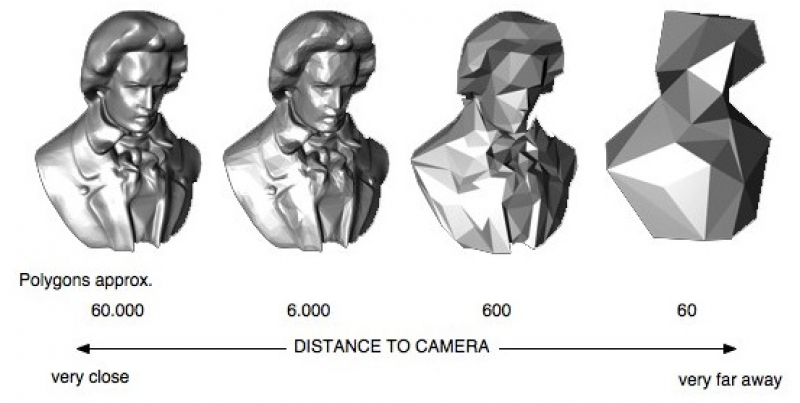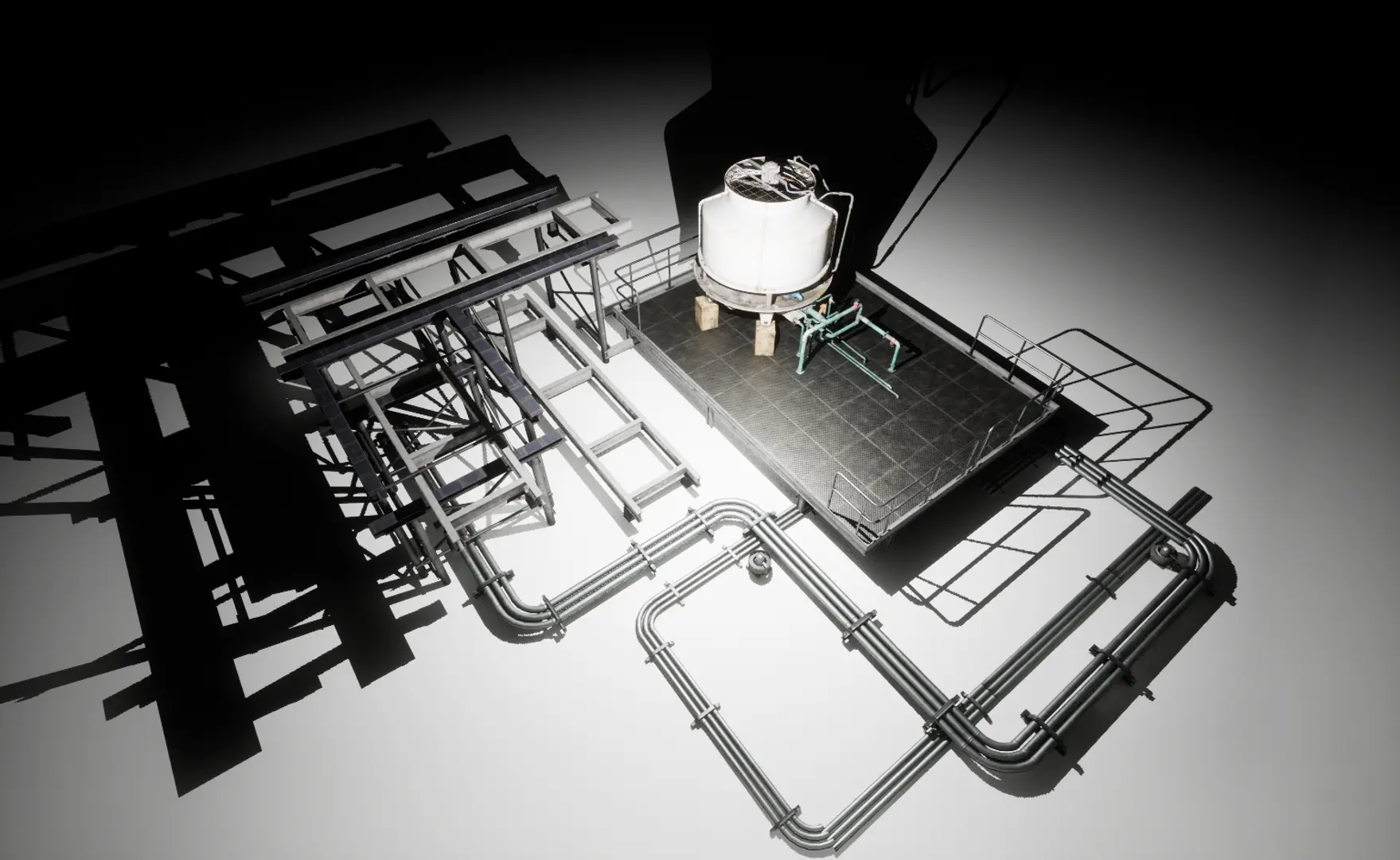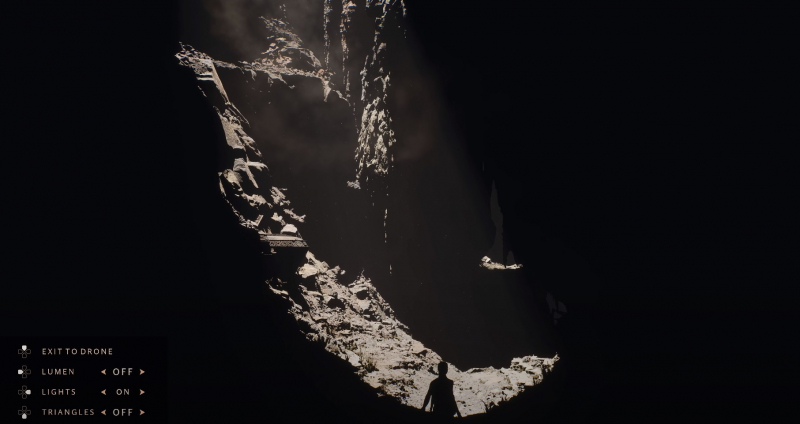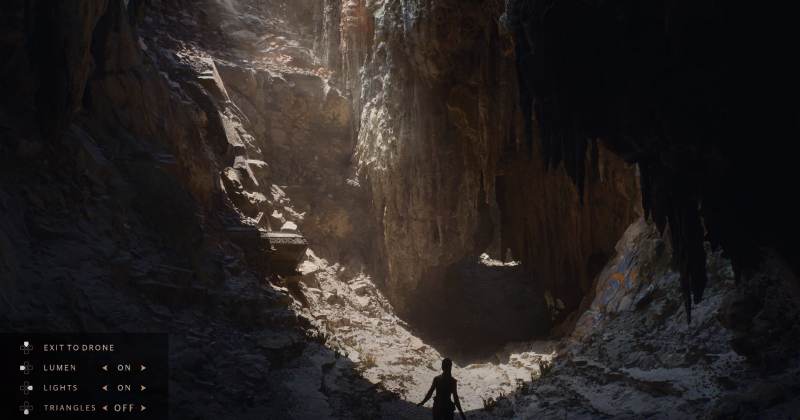Beyond Pixels : the virtualized rendering revolution, third episode.
In the world of real-time 3D rendering, there’s always been a trade-off between visual fidelity and performance. For decades, artists and developers have been challenged to squeeze every ounce of detail from hardware that can only process so much data in a fraction of a second. But with the arrival of Unreal Engine 5 (UE5), that balance is shifting in ways that once seemed impossible, thanks to a groundbreaking approach known as virtualization.
At SKYREAL, we’re excited to see how UE5 flips the traditional cost model on its head, making it possible to render scenes that were once reserved for offline path-tracers, in real time, on mid-range GPUs.
Let’s dive into what exactly UE5 is doing under the hood, and how it’s revolutionising the rendering pipeline.
As Elian Crémel, a tech artist passionate about motorcycles, often says: “UE5 offers all the options without compromises, just like a BMW 1250 GS, combining performance, comfort, and the freedom to ride both highways and off-road trails without limits.”
The traditional rendering cost model: what’s the problem?
Before UE5, real-time rendering followed a fairly straightforward rule: the heavier your scene, meaning the more polygons, higher resolution textures, and more complex lighting, the more expensive it would be to render. This cost was mostly tied to assets. If your scene had millions of triangles or 8K textures, your GPU needed to process all of that data, often resulting in bottlenecks, lower frame rates, or the need to dramatically simplify assets.
Developers had to resort to numerous tricks:
- Mipmapping & streaming textures: load lower-resolution textures when objects are far away.
- Level of Detail (LoD) models: swap complex meshes for simpler ones at a distance.
- Shadow cascades: split shadow maps into multiple levels to balance quality and performance.
- Prebaked global illumination: static lightmaps baked during development.
These techniques worked, but they focused only on assets and had limits. You had to carefully create LoDs, manage streaming, set parts of your scene to static and accept less accurate lighting.
Unreal Engine 5’s big bet: bind cost to pixels, not data
UE5’s revolutionary approach flips this paradigm by virtualizing everything. Instead of costs scaling with asset complexity, costs are now bound to screen pixels; the actual visible data the player or user sees. This subtle but powerful shift means developers can author incredibly detailed assets without paying the full performance penalty, because UE5 only processes what matters on-screen.
=> This shift doesn’t just improve performance, it redefines what’s possible in real-time 3D.
Let’s break down the main pillars of this virtualization:
1. Textures: Streaming Virtual Texturing (SVT)
Traditionally, textures were streamed in mip levels; big blobs of lower and higher resolution textures swapped in and out depending on distance and camera angle. While effective, this approach wastes memory because large textures had to be loaded even if only small portions were visible.
Streaming Virtual Texturing (SVT) breaks textures into tiny 128×128 pixel tiles and only loads the tiles needed for the current view. This technique maintains a virtual address space of the entire texture but physically stores just a fraction of it in GPU memory. If the camera moves, the engine dynamically streams in new tiles and evicts those no longer needed.
Why it is important ?
Because it’s a long-established and essential technique ; it means you can use massive 8K or even larger textures without the usual VRAM explosion. Your scene is very detailed when you are close, but still light to run.
2. Meshes: Nanite Virtualized Geometry
One of UE5’s crown jewels is Nanite, a virtualized geometry system that replaces traditional Level of Detail chains with clusters of triangles grouped into ~128 triangle blocks. Unlike traditional LODs, which require artists to manually create multiple versions of a mesh with decreasing complexity, Nanite automates this process by dynamically selecting the appropriate detail based on screen size.
So Nanite builds a hierarchical representation that allows the engine to:
- Render only the triangles that cover visible pixels.
- Automatically stop processing triangles once each pixel is covered by enough geometry.
- Create once and ship ultra-high detail models without worrying about LoD management or polygon budgets.
This means you can bring in film-quality assets directly into your real-time scene and have UE5 handle the rest. Nanite’s efficiency is partly due to its clever use of spatial data structures and tight integration with modern GPU architectures.
3. Shadows: Virtual Shadow Maps (VSM)
Shadows are notoriously expensive, especially in large, open worlds or VR applications where shadow quality directly impacts immersion. UE5’s Virtual Shadow Maps virtualize shadow maps similarly to SVT, creating a gigantic virtual shadow atlas (e.g., 16,384² virtual pixels) but paging in only the texels that the camera actually samples.
This eliminates common problems with traditional cascaded shadow maps, like wasted resolution on empty sky or blocky shadows at distance. The result is high-resolution, centimeter-scale shadows with kilometres of coverage at a stable cost.
Why virtualization matters for SKYREAL and our customers
At SKYREAL, we work extensively with industrial clients, who often face challenging constraints. Their digital mockups are usually extremely large and complex, often containing tens of thousands of parts or more. Presenting such high-fidelity 3D models on mid-range laptops or standalone VR devices used on factory floors or in design reviews can be a nightmare with traditional rendering pipelines.
UE5’s virtualization tech lets us deliver:
- Ultra-detailed scenes running smoothly on €1,200 notebooks, not just expensive workstations.
- Massive texture and geometry detail with stable performance, even in VR environments.
- Realistic shadows and lighting without costly pre-baking or manual tuning.
This means every users can explore, review, and simulate complex designs in real time, improving collaboration, spotting issues earlier, and accelerating decision-making.
Aesthetics are not left aside thanks to UE’s Global Illumination: Lumen
UE5’s Lumen hybridises several GI techniques (including screen-space traces, software ray tracing via signed-distance fields, and hardware ray tracing when available) to produce high-quality dynamic GI that adapts to changing lighting and geometry.
Lumen is designed to scale gracefully across hardware from high-end PCs and RTX GPUs, allowing our developers to have a good framerate while still delivering beautiful indirect lighting, reflections, and ambient occlusion .
Challenges and considerations
While virtualization unlocks incredible possibilities, it’s not without its limitations:
- Storage speed matters: Virtualization Systems like Nanite and VSM rely on fast NVMe SSDs for streaming data efficiently. Older Hard Drives can cause hitching or latency spikes.
- Transparency and special effects: Nanite currently has limited support for transparency, which may require fallback solutions but things are moving fast at Epic Games ?
- Development mindset: Moving from an asset-centric to a pixel-centric approach requires changes in workflows and authoring practices. Teams must adapt.
At SKYREAL, we’re actively exploring how to optimize and extend UE5’s systems for mid-spec hardware and industry-specific needs, ensuring these groundbreaking features deliver concrete and practical benefits.
The pixel-centric pipelines
Looking ahead, the rendering will likely see pixel-centric pipelines become the norm. Rather than worrying about polygon counts or texture budgets, we will focus on the quality of what’s visible and relevant to the user at any moment.
This is the vision UE5 is helping realise, where triangle counts, polygon budgets, and static baking are relics of the past, replaced by virtualized, dynamic, and highly optimised systems that deliver photo-realism at interactive frame rates.
Conclusion
Unreal Engine 5’s approach to virtualizing marks a fundamental shift in how real-time rendering works.
By binding rendering cost to pixels, not assets, UE5 flips the traditional rendering model on its head, enabling to render complex scenes without the usual performance penalties, focusing resources only on what is actually visible on screen.
At SKYREAL, we’re harnessing this revolution to empower users of our solutions across industries to unlock the true potential of their CAD data, enabling them to share and collaborate with colleagues seamlessly, without hardware constraints.
If you want to learn more about UE5’s technologies and how they integrate into industrial workflows, stay tuned for our upcoming blog posts where we’ll deep dive into texture virtualization, Nanite, virtual shadow maps, and more.







